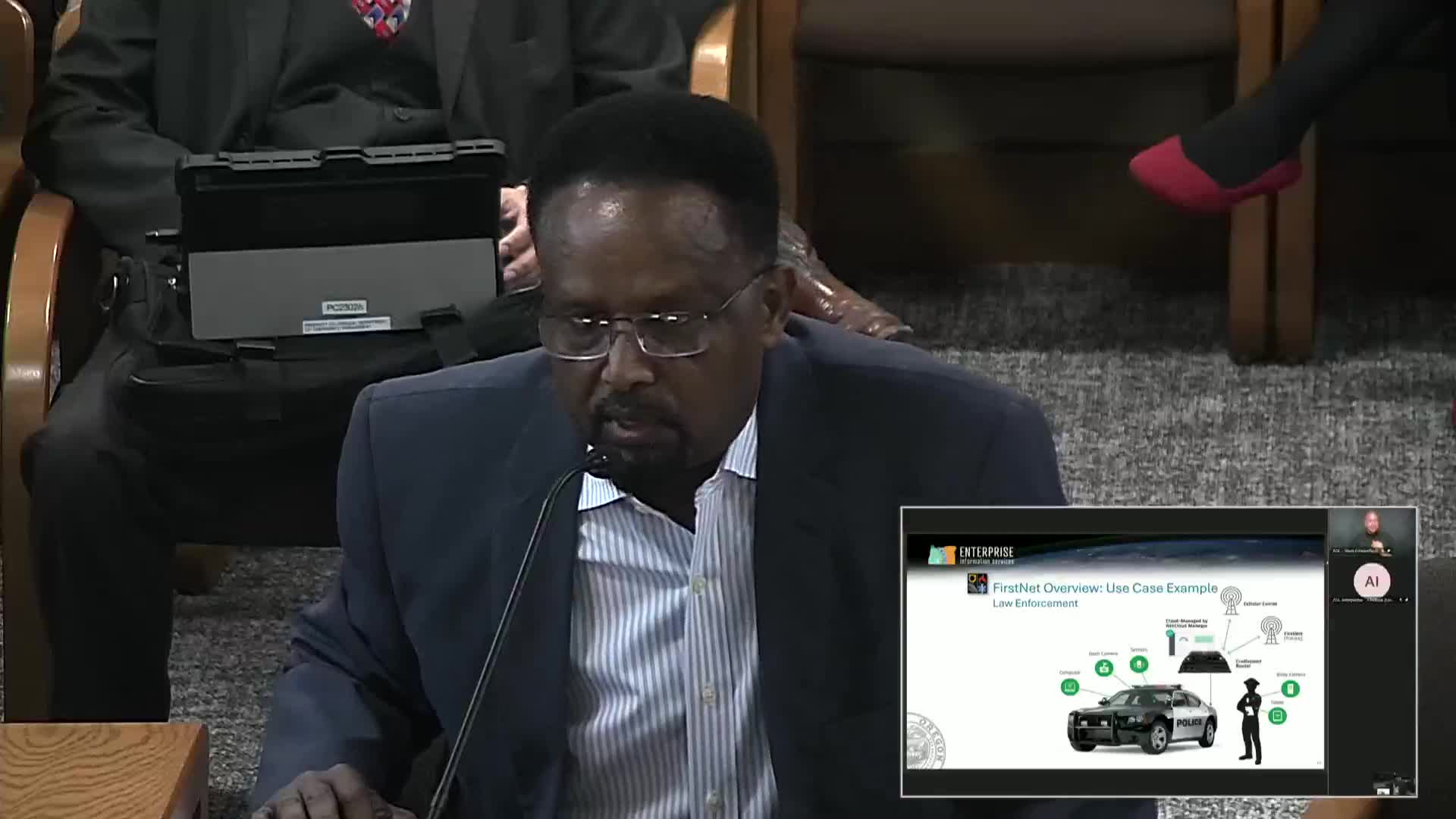Oregon enhances first responder communications with new Mission Critical Push to Talk technology
March 28, 2025 | Information Management and Technology, Joint, Committees, Legislative, Oregon
This article was created by AI summarizing key points discussed. AI makes mistakes, so for full details and context, please refer to the video of the full meeting. Please report any errors so we can fix them. Report an error »

During a recent meeting of the Joint Committee on Information Management and Technology, Oregon state officials discussed significant advancements in communication technology for first responders. The focus was on the implementation of a dedicated network designed to enhance the efficiency and effectiveness of emergency services across the state.
A key highlight was the introduction of the Mission Critical Push to Talk (MCPTT) protocol, which allows first responders to use cellular devices as communication tools similar to traditional radios. This innovation is particularly beneficial as it provides a cost-effective alternative to expensive multi-band radios, enabling quicker deployment of communication devices during emergencies. The state has already equipped a number of push-to-talk enabled phones for immediate use by first responders, ensuring they can communicate effectively during incidents.
The meeting also addressed the financial aspects of the network, with an investment of $6.3 billion allocated for future enhancements. This funding is generated through the radio spectrum, which is utilized to support public safety communications without overwhelming the network. The officials emphasized that this network is now the fourth largest in the United States, underscoring its importance in maintaining robust communication channels for emergency services.
Another critical feature discussed was the preemption priority system. This system ensures that first responders receive priority access to the network, automatically bumping civilian users off when necessary to optimize communication for emergency personnel. This capability is vital during high-demand situations, allowing first responders to maintain connectivity when it is most needed.
Overall, the discussions highlighted the ongoing commitment of Oregon's government to improve the technological infrastructure supporting first responders. As these advancements continue to roll out, they promise to enhance the safety and efficiency of emergency services throughout the state, ultimately benefiting the communities they serve.
A key highlight was the introduction of the Mission Critical Push to Talk (MCPTT) protocol, which allows first responders to use cellular devices as communication tools similar to traditional radios. This innovation is particularly beneficial as it provides a cost-effective alternative to expensive multi-band radios, enabling quicker deployment of communication devices during emergencies. The state has already equipped a number of push-to-talk enabled phones for immediate use by first responders, ensuring they can communicate effectively during incidents.
The meeting also addressed the financial aspects of the network, with an investment of $6.3 billion allocated for future enhancements. This funding is generated through the radio spectrum, which is utilized to support public safety communications without overwhelming the network. The officials emphasized that this network is now the fourth largest in the United States, underscoring its importance in maintaining robust communication channels for emergency services.
Another critical feature discussed was the preemption priority system. This system ensures that first responders receive priority access to the network, automatically bumping civilian users off when necessary to optimize communication for emergency personnel. This capability is vital during high-demand situations, allowing first responders to maintain connectivity when it is most needed.
Overall, the discussions highlighted the ongoing commitment of Oregon's government to improve the technological infrastructure supporting first responders. As these advancements continue to roll out, they promise to enhance the safety and efficiency of emergency services throughout the state, ultimately benefiting the communities they serve.
View full meeting
This article is based on a recent meeting—watch the full video and explore the complete transcript for deeper insights into the discussion.
View full meeting
